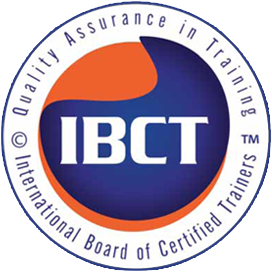Introduction
Working with a narcissistic leader can be both a blessing and a curse. On one hand, their charisma and self-confidence can inspire and drive success within an organization. On the other hand, their inflated sense of self-importance and disregard for others’ feelings can create a toxic work environment. In this article, we will explore how to identify narcissistic leaders, cope with them at work, and discuss whether effective HR management practices can prevent them from reaching positions of power.
Identifying Narcissistic Leaders
Spotting a narcissistic leader can be challenging, as they often exhibit charming and persuasive qualities. However, there are several common characteristics that can help in their identification:
- Excessive self-importance: Narcissistic leaders often believe they are superior and more deserving of recognition than others.
- Lack of empathy: They tend to dismiss others’ feelings and needs, focusing solely on their own ambitions.
- A constant need for admiration: Narcissists crave validation and seek admiration from their subordinates and colleagues.
- Manipulative behavior: They may use others for personal gain and have a tendency to exploit and control their team members.
- Inflated ego: Narcissistic leaders may exaggerate their achievements and downplay their mistakes.
Coping Strategies for Dealing with Narcissistic Leaders
Navigating the presence of a narcissistic leader requires a delicate balance of maintaining your professional integrity while also ensuring a healthy work environment. DuBrin (2012) suggests the following coping strategies:
- Assessing the relationship realistically: Understand the nature of the relationship and be prepared for potential challenges.
- Maintaining your professionalism: Focus on your work and maintain a positive and respectful attitude.
- Flattering the narcissistic leader: Provide praise when warranted, as it can help build rapport and minimize potential conflicts.
- Confronting the problem gently and tactfully: Address concerns in a non-confrontational manner, focusing on specific behaviors rather than attacking their character.
- Documenting your accomplishments: Keep a record of your achievements to protect yourself in case of unwarranted criticism.
- Being willing to accept criticism: Show openness to feedback, but also differentiate between constructive criticism and unfair attacks.
- Overresponding to their pet peeves: When possible, accommodate their preferences and avoid unnecessary confrontations.
- Maintaining a strong network: Build relationships with colleagues who can offer support and perspective during challenging situations.
Preventing Narcissists from Reaching Positions of Power
Effective HR management practices can play a crucial role in preventing narcissists from attaining leadership positions:
- Implementing effective selection assessments: Focus on objective criteria for the position rather than candidates’ attributes alone.
- Utilizing structured interviews: These can help assess candidates’ competencies and suitability for the role.
- Conducting thorough background checks: Verify candidates’ work history and accomplishments to ensure their claims align with reality.
- Encouraging 360-degree feedback: Involve multiple perspectives in the evaluation process to gain a comprehensive understanding of a candidate’s behavior.
Conclusion
Working with a narcissistic leader can present both opportunities and challenges. While their confidence and charisma may drive success, their self-centered behavior can create a toxic workplace environment. By identifying narcissistic traits and employing effective coping strategies, employees can navigate these situations with professionalism and grace. Moreover, HR management practices can play a vital role in preventing narcissists from attaining leadership roles in the first place, thereby fostering healthier and more productive work environments for everyone involved.
Resources:
- DuBrin, A. J. (2012). Leadership: Research Findings, Practice, and Skills (7th ed.). Cengage Learning.
- This book explores various aspects of leadership, including dealing with difficult personalities like narcissistic leaders.
- Rogoza, R., Cieciuch, J., & Strus, W. (2016). What makes narcissists unhappy? Subjective well-being and personality traits of the grandiose and vulnerable narcissistic types. Journal of Happiness Studies, 17(5), 2237-2252.
- This research article sheds light on the impact of narcissism on subjective well-being, helping understand the implications of working with narcissistic leaders.
- Rosenthal, S. A., & Pittinsky, T. L. (2006). Narcissistic Leadership. The Leadership Quarterly, 17(6), 617-633.
- This study delves into the traits and behaviors of narcissistic leaders and their effects on organizations and employees.
- Hogan, R., & Hogan, J. (2001). Assessing Leadership: A View from the Dark Side. International Journal of Selection and Assessment, 9(1/2), 40-51.
- This article provides insights into assessing leadership qualities, including those that can help identify potential narcissistic traits.
- Matthews, G., Deary, I. J., & Whiteman, M. C. (2003). Personality Traits (2nd ed.). Cambridge University Press.
- This comprehensive book covers various personality traits, including narcissism, and their influence on individuals in leadership positions.
- American Psychological Association (APA). (2018). Personality Disorders. https://www.apa.org/topics/personality-disorders
- The APA website offers valuable information on personality disorders, including narcissistic personality disorder, aiding in understanding these conditions.




Very nice article 👍 Thanks
We’re glad that you liked it.